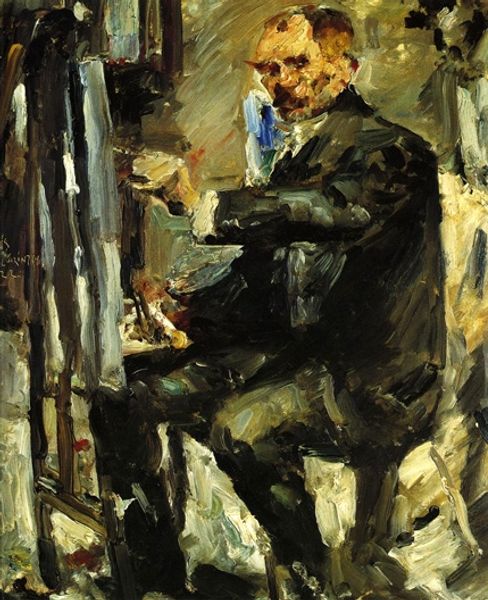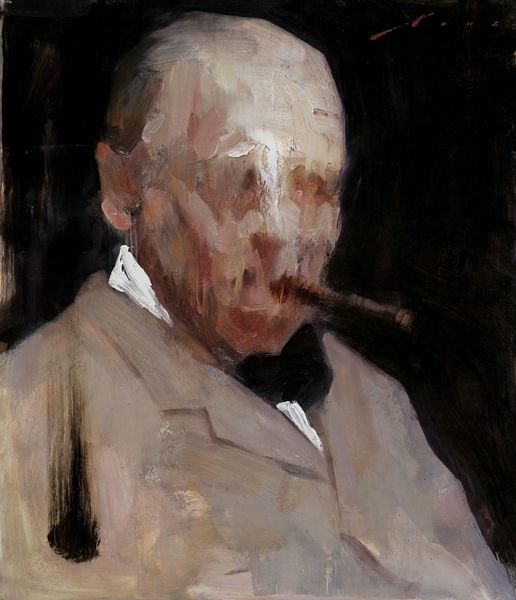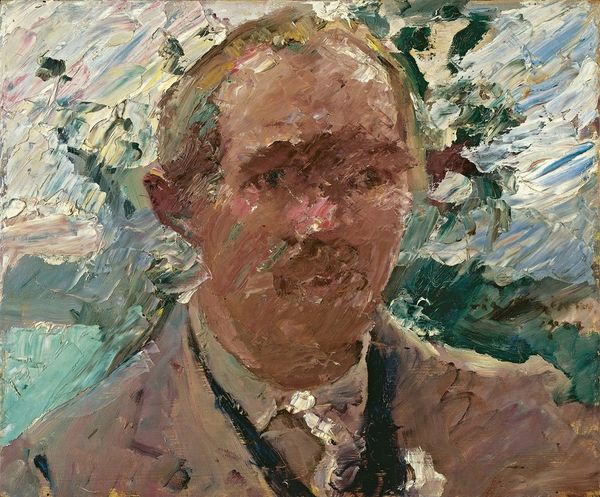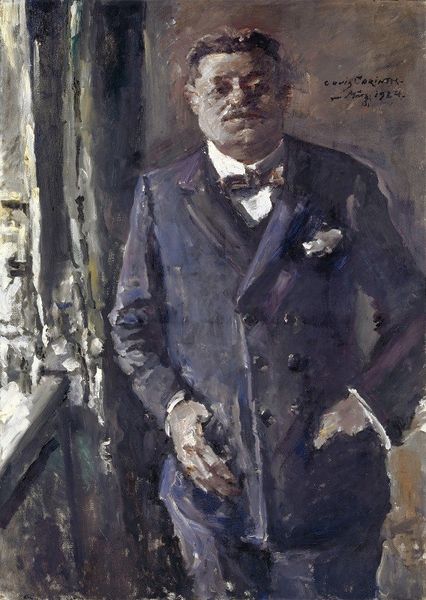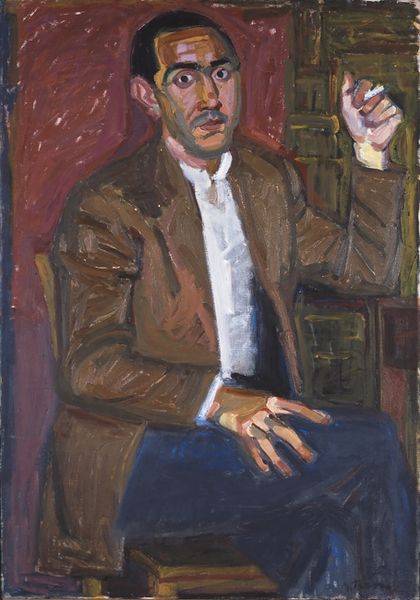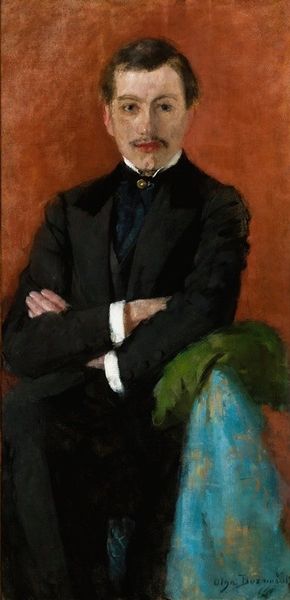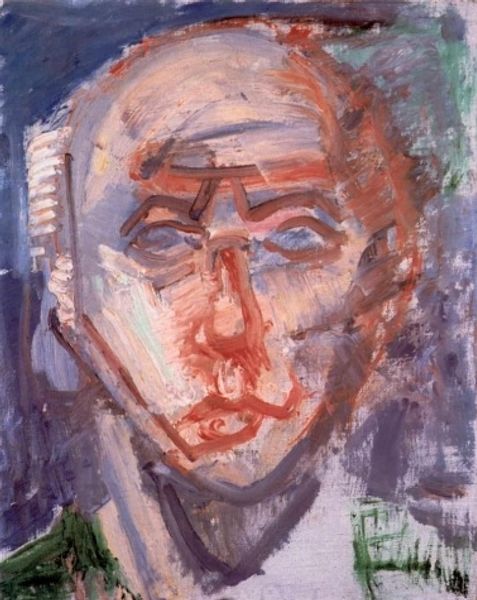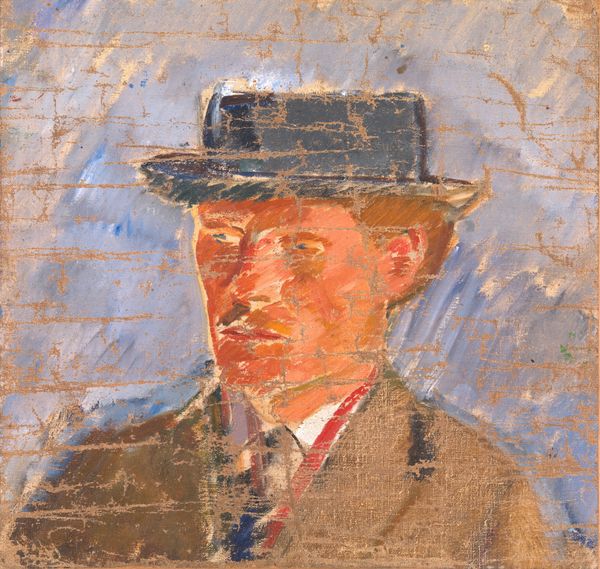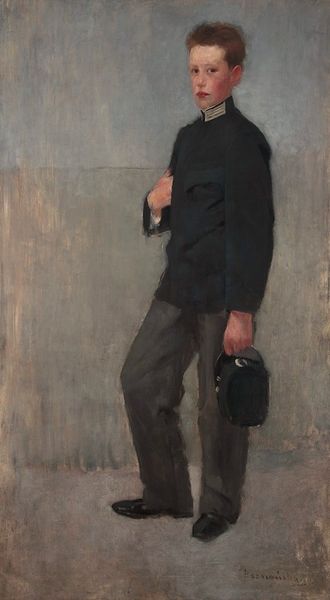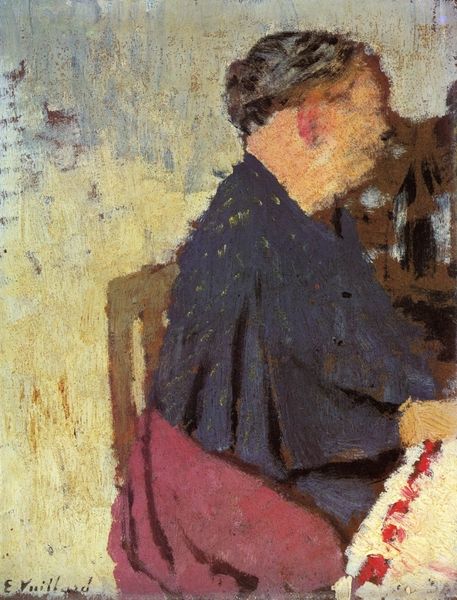
painting, oil-paint
#
portrait
#
painting
#
oil-paint
#
form
#
oil painting
#
expressionism
#
expressionist
Copyright: Public domain
Curator: Let’s turn our attention to Lovis Corinth's 1923 oil painting, "Portrait of Alfred Kuhn." It’s a compelling example of late Expressionism. Editor: Wow, he's got this haunted, hollow-eyed stare. Makes me think he's seen a ghost or just finished his taxes! The brushstrokes feel almost frantic, don’t they? Like Corinth was wrestling with something as he painted. Curator: Precisely. Corinth’s later work, especially after his stroke, engages directly with themes of mortality and the instability of the human form. This portrait, through its distorted features and somber palette, reflects those concerns poignantly. One might say it embodies a society and a people facing profound disruption after the first World War. Editor: Absolutely! There's something incredibly vulnerable about it. Look at the way his face seems to be emerging from the darkness, as if struggling to hold onto some semblance of self. I see a challenge to the classical portrait, where the subject's power and status were paramount. Instead, we get raw emotion and an exploration of inner turmoil. I wonder, who was Alfred Kuhn to have inspired this type of vision? Curator: Alfred Kuhn was, at the time, the president of the board of the National Gallery in Berlin. His portrait shows an interesting connection between artist and administrator that begs certain critical questions. Was the National Gallery effectively promoting artists during this time period? How was it falling short? Editor: The story is right there in his face: the weariness, the barely suppressed emotion…I think it reflects the turmoil of the artist as much as the sitter, and maybe even reveals the tenuous threads of that era. Curator: The gestural brushwork and dramatic lighting add to the sense of unease and psychological depth. It pushes beyond mere representation into the realm of emotional expression, as one would expect from an Expressionist. Editor: I can’t help but be drawn in, fascinated and saddened all at once. Art history provides us an intellectual framing, and that's very welcome. But ultimately, the heart understands this type of painting more immediately than the mind does, at least in my experience. Curator: Ultimately, the layered historical context enhances our reading of its emotionally charged content and that is part of what keeps this painting so alive for audiences even a century later.
Comments
No comments
Be the first to comment and join the conversation on the ultimate creative platform.
